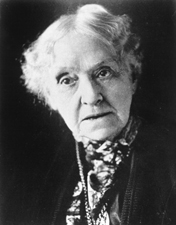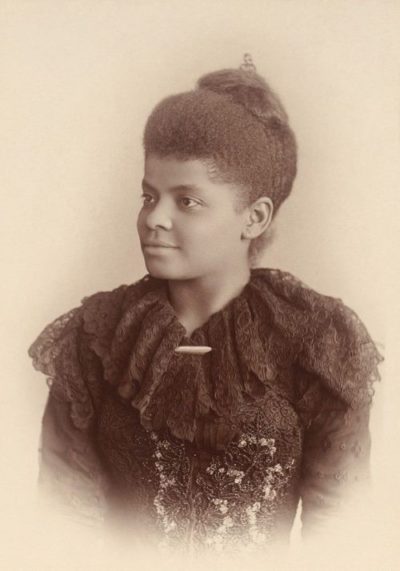Considering History: Emmett Till’s Casket and the Worst and Best of America
This series by American studies professor Ben Railton explores the connections between America’s past and present.
In the early morning hours of August 28, 1955, Roy Bryant and J.W. Milam abducted and lynched Emmett Till near the small town of Money, Mississippi. Till, who had just turned 14 years old a month earlier, lived in Chicago with his single mother Mamie; Mamie’s parents had left Mississippi as part of the Great Migration when she was just two years old, and in the summer of 1955 Emmett returned to the area for the first time, staying with Mamie’s uncle Mose Wright and his family. On the morning of August 24 Emmett and his cousin Curtis visited Bryant’s Grocery and Meat Market, where 21-year-old Carolyn Bryant was working by herself; according to Bryant’s testimony at the time, Emmett accosted her both verbally and physically. When her husband Roy returned from a fishing trip on August 27, Carolyn told him her version of the encounter, and he and his half-brother J.W. set out on a mission of revenge and racial terrorism that ended with the brutalizing and murder of Emmett.
Virtually every detail of Till and Bryant’s initial encounter remains in dispute, not least because Carolyn Bryant herself has in recent decades recanted some crucial aspects of her testimony (such as the physical side to the altercation). Roy and J.W.’s lynching of Emmett was never in dispute, yet the two men were acquitted on all charges by an all-white jury in a high-profile September 1955 trial. All those histories tell us a great deal about Mississippi, the South, and America, in 1955 and in our own moment. Yet there is another vital side to our collective memories of Emmett Till, one captured by his moving memorial at the National Museum of African American History & Culture.
The centerpiece of the NMAAHC’s Till memorial is his casket — not a replica, but the actual casket in which Till was buried after his early September funeral in Chicago. The Department of Justice exhumed Till’s remains as part of a 2005 investigation into his kidnapping and murder, and he was re-buried in a new casket; the old casket was stored at the cemetery and discovered in 2009. The NMAAHC, still in development at the time, acquired the casket soon after; as Director Lonnie Bunch III put it, “It is an object that allows us to tell the story, to feel the pain and understand loss. I want people to feel like I did. I want people to feel the complexity of emotions.”
When I visited the NMAAHC with my sons and my parents a couple weeks ago, it was indeed the Till memorial that most affected us all (which is no slight on the whole of this must-visit museum). We did feel that pain and understand that loss, as it’s impossible not to contrast the exhibit’s photos of young Emmett (as a baby, as a young boy alongside his mother, and as a smiling teenager just months before his murder) with the photos and stories of his lynching and, most potently, with that adolescent-sized casket, past which visitors to the memorial walk as if at a funeral service.
As that casket reminds us, the pain and loss of Emmett’s lynching was felt with particular force by Mamie. She had already lived through more than her share of struggle, including her family’s migration, her parents’ divorce when she was 13, and, especially, her abusive marriage with Emmett’s father Louis Till. They were only 18 when they married in 1940, and he was consistently abusive, culminating in his choking Mamie to unconsciousness in 1942 (when Emmett was about 1). After that assault she took out a restraining order on Louis, and when he violated it repeatedly he chose enlistment in the army rather than prison. In July 1945 Louis was court-martialed and executed in Italy for murder and rape, leaving Mamie and Emmett as a pair of survivors, a tight family unit on Chicago’s South Side.
For a parent to lose their child in any way is a tragedy; for Mamie to lose her only child in this sudden and brutal manner is a trauma too horrific to imagine. Yet as the museum’s open casket likewise reminds us, Mamie responded to that trauma with a pair of stunning and crucial choices: making Emmett’s funeral service public and, most potently, insisting on an open-casket service. “I wanted the world to see what they did to my baby,” she argued, and tens of thousands of mourners did see Emmett’s brutalized young body (with photographs being seen by millions more). Mamie then embarked on an NAACP-organized speaking tour, sharing her loss and trauma and son and voice with audiences around the country.
As the NMAAHC’s exhibit highlights in depth, Mamie’s choices became hugely inspirational for the nascent Civil Rights Movement and some of its most significant figures and actions. As Myrlie Evers put it, “Somehow [it] struck a spark of indignation that ignited protests around the world. … It was the murder of this 14-year-old out-of-state visitor that touched off a world-wide clamor and cast the glare of a world spotlight on Mississippi’s racism.” Or, as Rosa Parks put it more succinctly, when describing to Mamie Till herself the moment when Parks refused to move to the back of that Montgomery bus, “I thought of Emmett Till and I just couldn’t go back.”
The recent launch of the New York Times’s 1619 Project has prompted renewed debate about whether and how to remember our nation’s most violent and oppressive histories. Critics of the project (those not blatantly advancing white supremacist talking points) argue that dwelling on these painful histories is divisive and destructive to our present and future. Yet until we can feel the pain and understand the loss, how we can possibly grapple with not only the histories themselves, but the nation that has featured them so consistently and centrally? We can only do so by standing before the casket — and when we do, we can also remember the ways in which figures like Mamie Till, Rosa Parks, and so many more have experienced and yet transcended our worst, modeling the best of what we might still become.
Featured image: Emmett Till with his mother, Mamie Bradley, ca. 1950 (Alamy)
Considering History: The Role of Women in the Lynching Epidemic
This series by American studies professor Ben Railton explores the connections between America’s past and present.
On February 14, Senator Kamala Harris introduced legislation into the Senate that would for the first time in American history make lynching a federal crime. The Justice for Victims of Lynching Act, originally drafted by Harris in June 2018, does more than just criminalize lynching—as its name suggests, it seeks to remember and in some small ways make amends for the thousands of lynchings that took place between the end of the Civil War and the 1960s. “With this bill,” Harris said, “we finally have a chance to speak the truth about our past and make clear that these hateful acts should never happen again. We can finally offer some long overdue justice and recognition to the victims of lynching and their families.”

The horrific stories of lynching are intimately intertwined with African American history, a significant factor in Harris’s choice to introduce the bill during Black History Month. Yet as with any American histories, lynching’s connections extend to every national community. For Women’s History Month, Harris’s prominent role in these unfolding 21st century accounts can also help us remember the fraught, contradictory, and crucial links between American women and the lynching epidemic.
Perhaps the single most jarring defense of lynching was offered by a pioneering feminist activist. Rebecca Ann Latimer Felton, the wife and political partner of longtime Georgia Congressman William Harrell Felton, was one of the Progressive Era’s most prominent and acclaimed women’s rights activists: an advocate of women’s suffrage, equal pay, and many other feminist causes, she became the first woman to serve in the U.S. Senate when, at the age of 87, she was honored with a single-day appointment as Senator from Georgia on November 21, 1922. Yet she was also a white supremacist and racist who openly advocated for the systematic lynching of African Americans.
Felton made her case for lynching most vocally in an August 1897 speech to the Georgia Agricultural Society. While she identified a number of problems facing (white) farm wives in the state, she focused in particular on “the black rapist” and the threat he posed to those women. She repeated the canard that Reconstruction had given African Americans “license to degrade and debauch.” And in response to those imagined terrors, she argued, “When there is not enough religion in the pulpit to organize a crusade against sin; nor justice in the court house to promptly punish crime; nor manhood enough in the nation to put a sheltering arm about innocence and virtue—if it needs lynching to protect woman’s dearest possession form the ravening human beasts—then I say lynch, a thousand times a week if necessary.”

Felton’s bigoted speech reminds us that the era’s progressive white women far too often allied with the forces of segregation and white supremacy, both to further their movement’s goals and (as in Felton’s case to be sure) out of genuine and deeply rooted racism. Yet as historian Martha Jones has recently argued, the under-appreciated contributions of African American women to the women’s suffrage movement played a crucial role in advancing women’s right to vote. One of the most prominent such African American suffrage activists, Ida B. Wells, also happened to be the nation’s leading anti-lynching journalist and crusader.
The opening pages of Wells’s first book, Southern Horrors: Lynch Law in All Its Phases (1892), reflect the intersections of her women’s rights and anti-lynching activism. In her preface, Wells acknowledges the fundraising efforts of New York City women’s rights organizations that allowed her to publish the book, writing, “the noble effort of the ladies of New York and Brooklyn Oct. 5 have enabled me to comply with this request and give the world a true, unvarnished account of the causes of lynch law in the South.” Wells highlights both her own status as a target of white supremacist violence (when her Memphis newspaper office was burned down) and her courageous response to those attacks: “Since my business has been destroyed and I am an exile from home because of that editorial, the issue has been forced, and as the writer of it I feel that the race and the public generally should have a statement of the facts as they exist.” As an African American woman speaking out against these horrors, she likewise revises Felton’s images of race and gender, noting, “[The facts] will serve at the same time as a defense for the Afro-Americans Sampsons who suffer themselves to be betrayed by white Delilahs.”

While reports of lynching usually involved African American male victims, the epidemic also extended to other communities of color, including Chinese Americans and Mexican Americans. A recent New York Times article that highlights the histories of Mexican American lynchings in particular reveals another role for American women activists: as contributors to expanded collective memories. That includes the historians upon whose work that New York Times article depends: Professors Monica Muñoz Martínez of Brown University and Laura F. Edwards of Duke University. But it also includes women like Arlinda Valencia, the Texas educator and union official whose ancestors were among the victims of the January 1918 Porvenir mass lynching in which Texas Rangers and ranchers destroyed an entire Mexican American village.
Professor Martínez’s educational nonprofit organization Refusing to Forget has in the half-dozen years since its founding done particularly impressive work recovering those histories and sharing them with audiences of all types. Those efforts include historical markers for particular sites such as Porvenir, traveling and permanent museum exhibitions, and public lectures and conversations. Martínez and her colleagues have discovered a pattern of widespread violence directed not only at individual Mexican Americans, but also and especially at entire communities, with the Porvenir massacre sadly not atypical of these outbursts of collective brutality.
Like Senator Harris, these scholarly and civic historians are working to make the lynching epidemic’s histories more consistently present in our 21st century collective memories. Doing so likewise requires remembering lynching’s complex intersections of race and gender, both in their most destructive and most inspiring forms.
Featured image: The Silent Parade in 1917 in New York City was organized by the NAACP to protest violence toward African Americans. (Library of Congress)